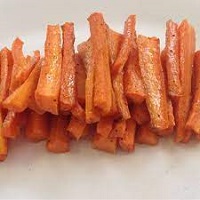Cake Making in Nigeria: A Step-by-Step Guide
Cake making is as easy as measuring ingredients, mixing them correctly, and remembering to remove the cake from the oven before it burns.
Cake is a soft sweet food made from a mixture of flour, fat, eggs, sugar, and other ingredients, baked and sometimes iced or decorated.
Please Read: Ice cream sandwich cake- easy, quick, and delicious
A freshly baked cake smothered in frosting makes an irresistible homemade dessert.
Cake Making At Home: A Step-By-Step Guide
Making a cake that is moist and mouthwatering every time at home is simple.
Be it birthday, Bundt, wedding, unicorn cake for someone special or an over-the-top holiday cake.
Most cake recipes start with the same method: beating butter or shortening with sugar until it is fluffy.
They are sometimes called creamed cakes because the fat and sugar are creamed together.
Other cakes, like angel food and pound, use different methods.
Cake Making for Beginners
Follow this easy procedure for mixing, prepping and baking.
Step 1: Choose a Recipe
Firstly, to bake a dazzling, mouthwatering cake starts with choosing a recipe.
Step 2: Choose the Right Baking Pans
Secondly, some cakes can be baked in a variety of pans while others need a specific pan.
Cheesecakes need a spring-form pan, Bundt cakes need a Bundt pan, and sheet cakes need a sheet pan and so on.
Step 3: Measurements Matter
Thirdly, take the time to be precise. Accurate measurements mean tastier results.
Step 4: Bring All Ingredients to Room Temperature
Fourthly, measure your ingredients while the butter and eggs warm up. Batter mixes best when ingredients are at room temperature.
Step 5: Prep the Pans
Ordinarily, nobody wants their cake to stick to the pan, so it’s important to butter the pan with softened butter or nonstick spray.
Line the pan with parchment paper-this will help your cake release perfectly-and butter the parchment.
Step 6: Preheat
Preheat your oven for at least 20 minutes. Use an oven thermometer so you’ll know if your oven is running hot or cold.
Step 7: Stir Together Dry Ingredients
Add each dry ingredient (baking powder and/or baking soda, and salt) separately to the batter; mix them in a bowl beforehand.
Step 8: Combine the Butter and Sugar
Make sure the butter (or shortening, if specified in the recipe) and the sugar are perfectly combined.
Step 9: Add Eggs One at a Time
Add the egg to the butter-sugar mixture and beat well. Repeat with the remaining eggs.
Step 10: Alternate Adding Dry and Wet Ingredients
Alternate between adding some of the flour mixture and some of the milk (or other liquid specified in the recipe).
This is because when liquid is mixed into the flour, gluten begins to form.
Too much gluten makes for a tough cake, so be sure to start and finish with flour, and not over mix once you add liquid.
Step 11: Pour Batter into Pans and Bake
Divide the batter evenly between the baking pans. Use an offset metal spatula to spread the batter in an even layer.
Be sure to spread it to the pan edge. Bake according to your recipe’s directions.
Step 12: Check Cake for Doneness
How do you avoid a dry cake? Avoid over-baking it.
If the recipe gives you a range, say 40-45 minutes, set the timer to 40 minutes and check for doneness when the timer goes off.
For creamed cakes, insert a wooden toothpick near the center. If the pick comes out clean, then it is done.
Step 13: Cool the Cake
Take the pan out and place it right side up on a wire cooling rack.
Set the timer for ten minutes. When the timer goes off, run a clean butter knife around the edges (sides) of the pan to loosen the sides of the cake.
Then place the cooling rack on top and turn the pan over. Tap the bottom of the pan gently a few times and the cake should release without sticking.
Allow to cool completely, then frost and decorate.
Step 13: Assemble the Cake
To prevent crumbs in your frosting, brush the layers with a pastry brush before gathering together.
Spread about ½ cup of frosting over the first layer, then cautiously top with the next layer. Continue until everything is assembled.
Step 14: Add the First Coat of Frosting
Enhance with a crumb coat by spreading a very thin layer of frosting over the sides and the top.
This first coat doesn’t need to look perfect; it’s another way to keep the crumbs out of the frosting.
Allow to stand for 30 minutes so the frosting sets up
Step 15: Frost and Decorate
Spread the remaining frosting generously over the top and sides of the cake, using an offset spatula or table knife, and swirling as you go.
Cake Decorating is the art of using icing or frosting to improve the keeping qualities.
It helps with the flavor and richness, and most importantly add visual appeal.
Serve within 2 hours or refrigerate to store.




Pingback: Number Cake | Alphabet Cake | How to Make Cream Tart - 9jafoods
Pingback: Old Fashioned Cheesecake Recipe: Easy and Delicious - 9jafoods
Pingback: Cake without Oven - Easy Cake Recipe without an Oven - 9jafoods